
Trenowith, Corn.

Carthen
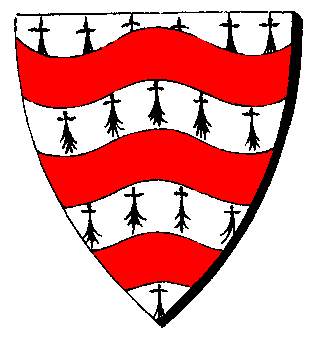
Lacy
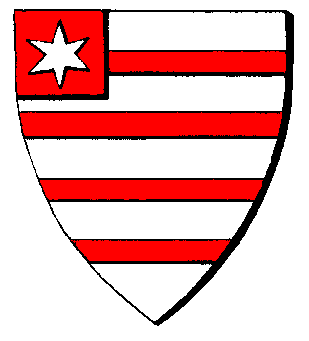
Wace

Ercall

Bradwardine, Archbishop of Canterbury, 1349

Senhouse, Cumberland[also Richard Senhouse, Bp. of Carlisle, 1624-26].
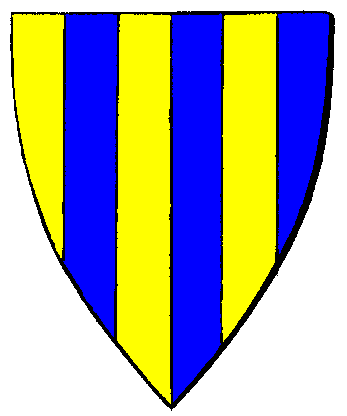
Gournay or Gurney, Devon.
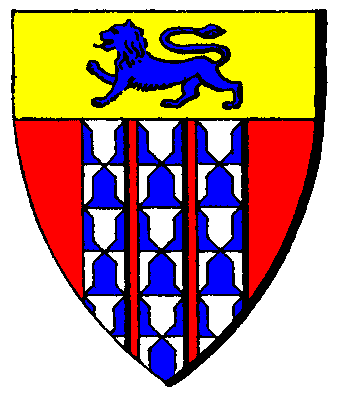
Simon Patrick, Bp. of Chichester, 1689; of Ely, 1691-1707
Ordinaries are the basic geometric shapes used in Arms. They cover the background of the shield. I have grouped them by general shape. My groupings do not reflect any actual SCA or heraldic catagories. Most ordinaries are either shapes or dividers. When the ordinary is a shape, it is refered to as an "ordinary" "color". When the ordinary divides up areas on the shield, it is refered to as per "ordinary" "color" (and "color" and "color"...). When several objects (charges) are arranged in the shape of an ordinary, they are refered to as "number" "charges" in "ordinary" "color".
Ordinaries can be divided into three catagories ordinaries, subordinaries and diminutives. The principle ordinaries are the cross, the chief, the pale, the bend, the bend sinister, the fesse, the bar, the saltire, and the chevron. The subordinaries include the bordure, the canton, the flanche, the gyron, the inescutcheon, the orle, the quarter, the pile, and the tressure, the fret, the label, and the pall. The diminutives include the fillet, the barrulet, the pallet, the bendlet, the scarpe, the closet, the cotise, the chevronel, the crosslet, and the saltorel.
There is no real agreement about which ordinaries fit into which catagories. One thought is that the catagory of an ordinary defines how the ordinary can be used. Shapes in the ordinaries catagory can only be used as shapes directly on top of the painted shield background. They may not be placed over other ordinaries. Other charges, subordinaries, and diminutives may be placed on top of these ordinaries. One such ordinary is the chief, a horizontal band at the top of the shield. Subordinaries may be the basic shape on the shield or a shape on top of a basic ordinary. Other charges, subordinaries, and diminutives may be placed on top of them. The subordinary, quarter, may be applied to a shield "Quarterly argent and gules" or to an ordinary "Ermine, a chief quarterly gules and or - Peckham. [Abp. Cant. 1219-92]". A diminutive may not be charged (have objects placed on it). (But remember, all rules were made to be broken).
I mention many of these ordinaries below and give actual period examples whenever possible. All examples attributed to Parker (5) unless otherwise noted.
Stripes
 |
Argent, on a fesse sable, three chevronels couched sinister of the
field. Trenowith, Corn. |
 |
Argent, a fesse gules between three ducks azure. Carthen |
 |
Ermine, three bars wavy gules. Lacy |
 |
Argent, four barrulets gules; on a canton of the second a mullet of
six points of the first. Wace |
 |
Argent, three bars-gemels sable. Ercall |
 |
Barry of six ermine and ermines. Bradwardine, Archbishop of Canterbury, 1349 |
 |
Per pale argent and gules, in the dexter fesse point a parrot russet
beaked and legged or. Senhouse, Cumberland[also Richard Senhouse, Bp. of Carlisle, 1624-26]. |
 |
Paly of six, or and azure. Gournay or Gurney, Devon. |
 |
Gules, three pallets vair; on a chief or a lion passant azure.
Simon Patrick, Bp. of Chichester, 1689; of Ely, 1691-1707 |
Diagonals
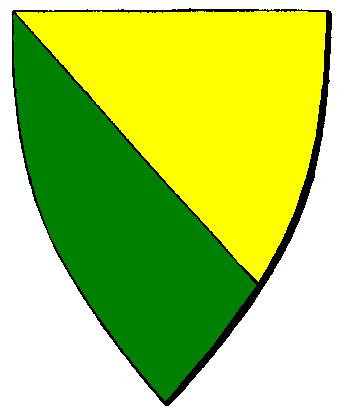
| Party per bend, or and vert. Hawley |

| Argent, a bend sinister gules. Bizzet, Scotland. |

| Gules, a bend ermine between six bezants. [? Sir Armoyne Coughte, from arms in Dorchester Church, Oxon.] |
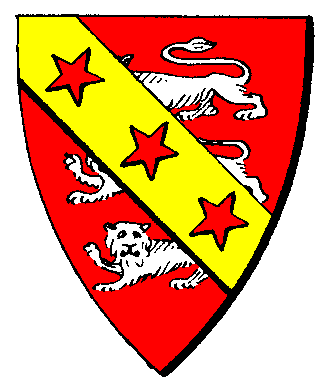 |
Gules, three lions passant gardant in pale argent, over all a bend
or charged with three mullet. Payler |
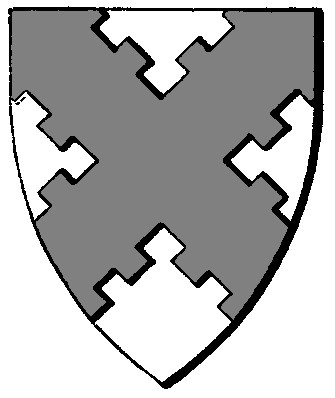 |
Argent, a saltire counter embattled sable. Richard Kidder, Bp. of Bath and Wells, 1691-1703. |
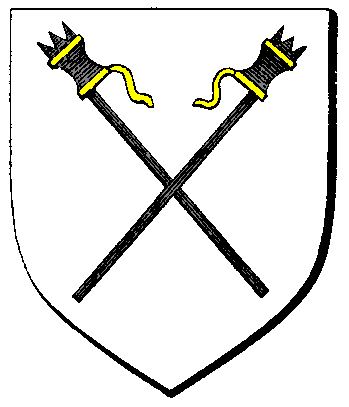 |
Argent, two stilts in saltire sable, garnished or Newby, Yorkshire. |
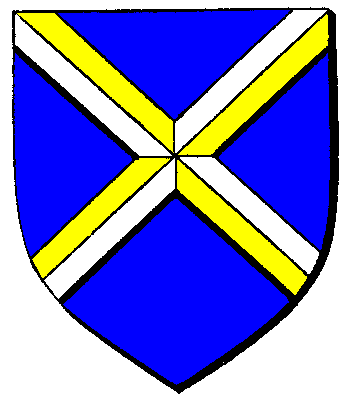 |
Azure, a saltire quarterly quartered or and argent
or and azure. See of Wells |
 |
Gyronny of eight, argent and gules Acton |
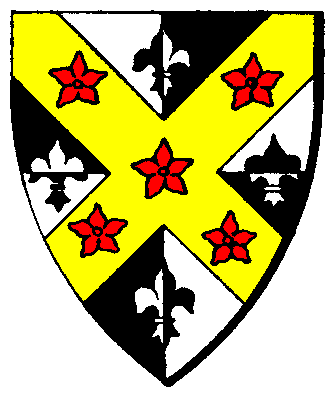 |
Gyronny of eight argent and sable, four
fleur-de-lys counterchanged; on a saltier or, five cinquefoils
gules. Edward Vaughan, Bp. of S.Davids, 1509-22. |
Checkers
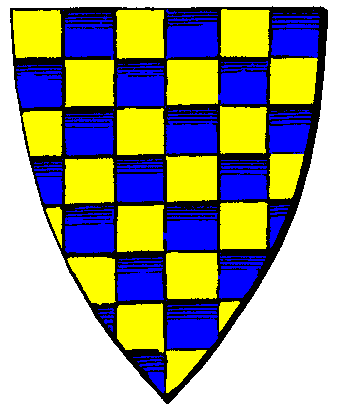 |
Chequey or and azure Warren |
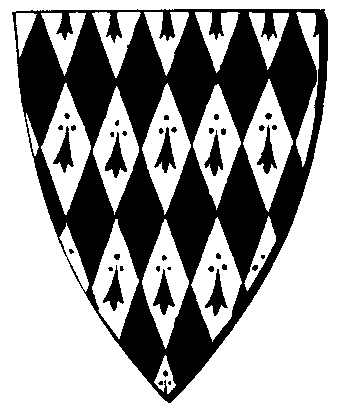 |
Fusilly, ermine and sable. Patten, Stoke Newington, Middlesex |
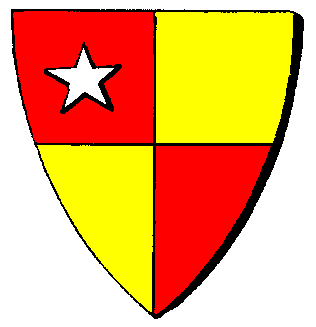 |
Quarterly gules and or, in the first quarter a mullet argent Vere, Earl of Oxford. |
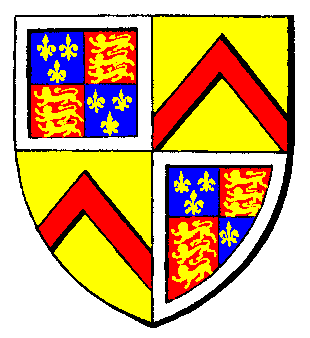 |
Quarterly, first and fourth France and England quartered within
a bordure argent; second and third or, a
chevron gules. Stafford, Duke of Buckingham |
 |
Quarterly per pale dovetailed, gules and or. Bromley, Horse-heath, Cambridgeshire |
Triangles
 |
Party per chevron, sable and argent. Aston |
 |
Or, a fesse between two chevrons gules. Fitz-Walter |
 |
Or, a pile gules. Chandos, Baron Chandos. [Summoned to Parliament, 1337.] |
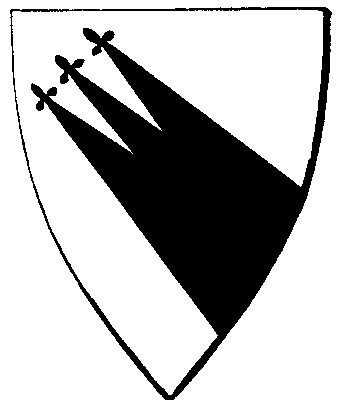 |
Argent, three piles flory at the points, issuing from the sinister base
bendwise sable. Wroton |
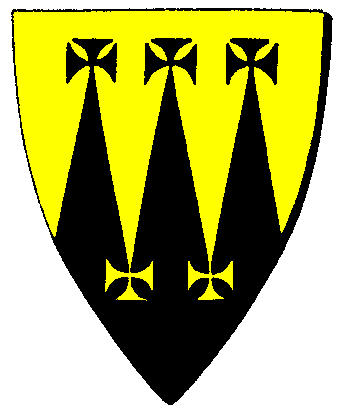 |
Pily counter pily of seven traits(or pierces) or and sable, the
points ending in crosses pettee, three in chief, and two in base.
Poynter |
Crosses
There are many different types of crosses. Most are charges rather than
ordinaries. (Charges are objects on the field rather than partitions of the
field).

| Argent, a cross quarter pierced gules. Boisy, Ile de France |
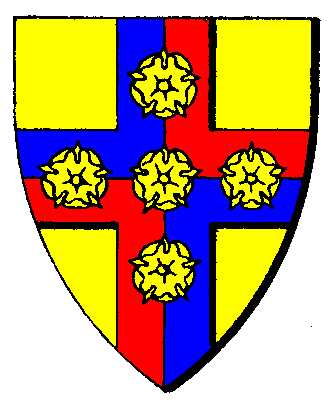
| Or, on a cross quarterly azure and gules five roses of the first.
Thomas Langton, Bp. of S.David's, 1483 |

| Quarterly argent and azure, a cross counterchanged. Bevercott |
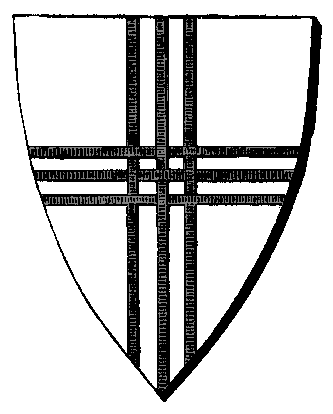 |
Argent, a cross triple parted and fretted sable. Skirlaw, Yorkshire |
Other Ordinaries

| Or, two flaunches gules. Lanercost Priory, Cumberland |
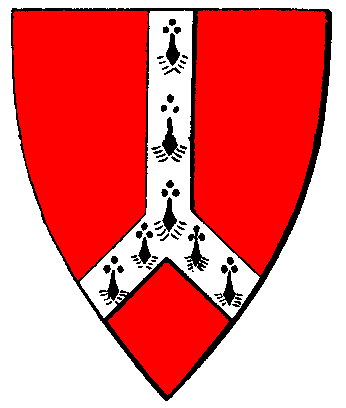 |
Gules, a pall reversed ermine. Kelverdon, or Keldon, Essex |
Types of lines
Complex lines should be easily and quickly recognizable with 3 or 4
"bumps" on horizontal lines and 4 or 5 on vertical and diagonal lines. By
using fewer "bumps", each can be drawn larger making them more
recognizable.

| Per bend embattled argent and gules. Boyle, Middlesex |
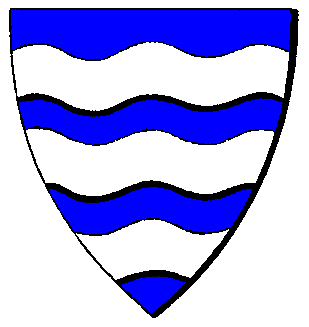
| Azure, three bars wavy argent. Henry de Sandford, Bp. of Rochester, 1227-35 |

| Azure, a chief indented or. Dunham, Lincolnshire |

| Argent, a fesse dancetty with a cross formy issuing in chief gules. Arms ascribed to Reginald Fitz-Jocelyn, Bp. of Bath and Wells, 1191 |
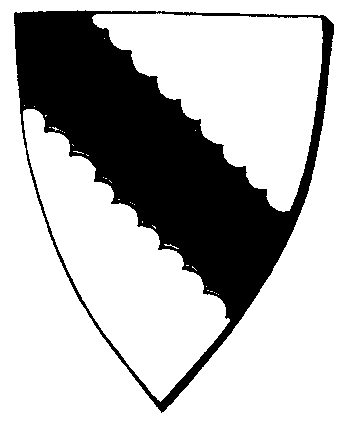
| Argent, a bend engrailed sable. Radcliffe |
 |
Party per pale nebuly azure and or, six martletts counterchanged; a
crescent for difference. Fleetwood, Bp. of S.Asaph, 1708; afterwards of Ely, 1714-23. |
 |
Argent, a fesse per fesse indented throughout vert and sable,
cottised counterchanged. Hody, Dorset. |
Borders
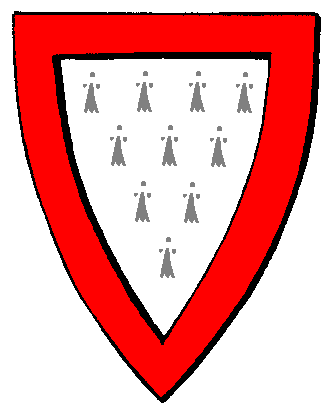 |
Ermine, a bordure gules. Hundescote |
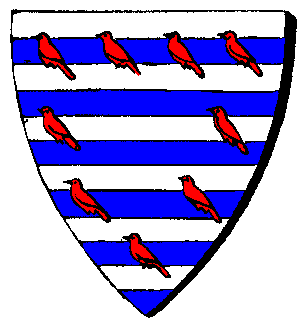 |
Barry argent and azure, an orle of marlets gules. William de Valens, Hen III |